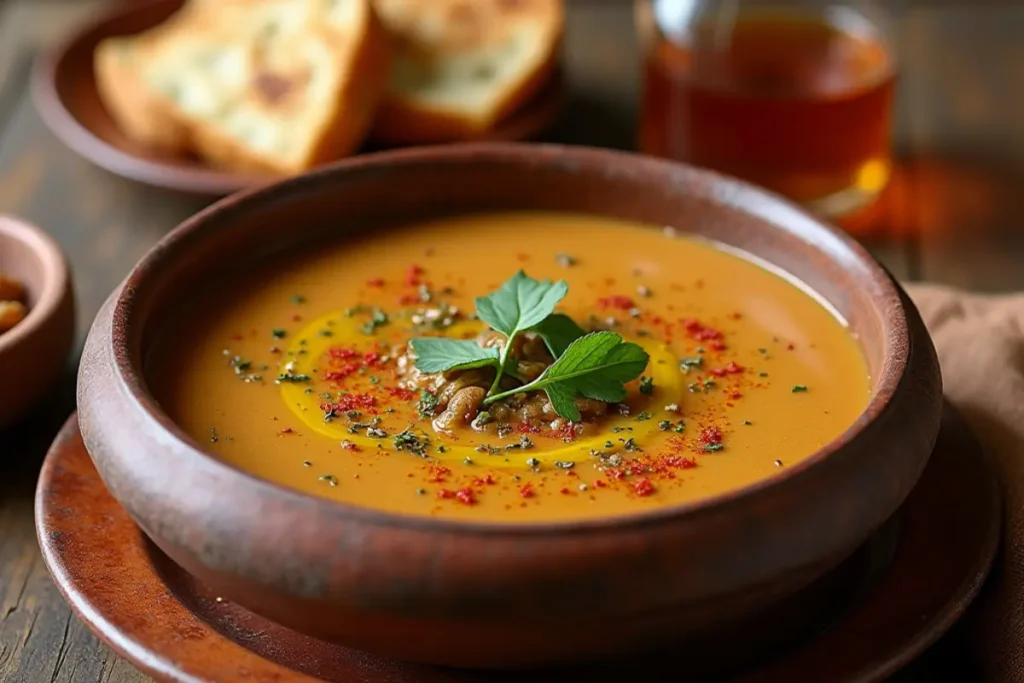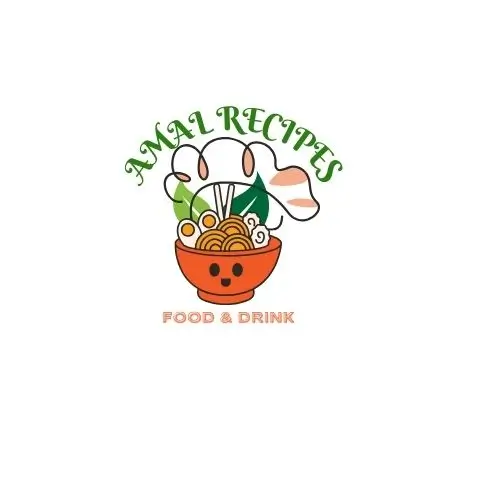Moroccan Breakfast: A Flavorful Journey Through Traditional Morning Delights
Moroccan breakfast is a vibrant tapestry of flavors, textures, and aromas that’ll transport you straight to the bustling streets of Marrakech. From fluffy pancakes to hearty soups, the diverse array of dishes reflects Morocco’s rich culinary heritage. In this article, we’ll explore the essential components of a traditional Moroccan breakfast, delve into popular recipes, and uncover the cultural significance behind these morning delights. So, grab a cup of mint tea and let’s embark on a mouthwatering journey through the world of Moroccan breakfast!
Table of Contents
Essential Components of a Moroccan Breakfast
A typical Moroccan breakfast is a delightful mix of savory and sweet flavors, featuring an assortment of breads, pastries, and accompaniments. Let’s dive into the key elements that make up this flavorful morning feast.
Bread Varieties
Khobz: This traditional Moroccan bread is the cornerstone of any breakfast spread. It’s a round, flattish loaf with a slightly chewy texture, perfect for sopping up olive oil or dipping into various spreads.
Batbout: Also known as Moroccan pita bread, batbout is a stovetop-cooked bread with a pocket, ideal for stuffing with cheese or olives.
Pancakes and Flatbreads
Baghrir: These semolina pancakes are a breakfast favorite, characterized by their spongy texture and tiny holes that soak up honey or butter perfectly.
Msemen: A square, flaky flatbread that’s often served with honey, butter, or soft cheese. It’s also delicious when stuffed and rolled up for an on-the-go breakfast.
Accompaniments
Jben: This fresh Moroccan white cheese is a staple on the breakfast table, often paired with bread or used as a spread.
Amlou: A delicious dip made from argan oil, almonds, and honey, amlou is a uniquely Moroccan treat that’s perfect for spreading on bread.
Olive oil and olives: No Moroccan breakfast is complete without a drizzle of olive oil and a handful of flavorful olives.
Popular Moroccan Breakfast Dishes
Now that we’ve covered the basics, let’s explore some of the most beloved Moroccan breakfast dishes that’ll make your taste buds dance with joy.
Hearty Soups
B’ssara: This thick fava bean soup is a popular breakfast choice, especially during colder months. It’s often topped with a drizzle of olive oil and served with bread.

Harira: While traditionally eaten to break the fast during Ramadan, this tomato-based soup has found its way onto breakfast tables across Morocco.
Egg Dishes
Shakshuka: This North African dish of poached eggs in a spicy tomato sauce is a breakfast favorite that’s gained international popularity.
Khlea and Eggs: A delicious combination of dried meat (khlea) and fried eggs, typically served with bread and olives.
Sweet Treats
Sfenj: These Moroccan donuts are crispy on the outside and soft on the inside, often enjoyed with a cup of mint tea.
Krachel: Sweet rolls flavored with anise seeds and orange blossom water, perfect for those with a morning sweet tooth.
Beverages to Complement Your Moroccan Breakfast
No Moroccan breakfast is complete without the right beverages to wash it all down. Here are some popular drinks that’ll quench your thirst and awaken your senses.
Mint Tea
The national drink of Morocco, mint tea is a refreshing blend of green tea, fresh mint leaves, and sugar. It’s not just a beverage; it’s a symbol of hospitality and friendship.
Fresh Orange Juice
With Morocco being a major producer of citrus fruits, it’s no surprise that freshly squeezed orange juice is a breakfast staple. It’s the perfect way to start your day with a vitamin C boost.
Coffee
While not as prevalent as mint tea, coffee has gained popularity in Morocco. You’ll often find it served strong and sweet, sometimes flavored with spices like cardamom.
The Cultural Significance of Moroccan Breakfast
Breakfast in Morocco is more than just a meal; it’s a social event that brings families and friends together. The leisurely pace and variety of dishes encourage conversation and connection.
Family Gatherings
Moroccan breakfasts are often elaborate affairs, especially on weekends when families have more time to prepare and enjoy a variety of dishes together. It’s a time for catching up and strengthening bonds.
Hospitality
Offering a generous breakfast spread is a way of showing hospitality to guests. The more varied and abundant the offerings, the more welcome the guest feels.
Seasonal Variations
The components of a Moroccan breakfast can vary with the seasons. For example, b’ssara is more common in winter, while fresh fruits might take center stage in summer.
Nutritional Value of Moroccan Breakfast Foods
Moroccan breakfast foods offer a balanced mix of nutrients to kickstart your day. Here’s a breakdown of the nutritional value of some common breakfast items:
| Food Item | Calories | Protein (g) | Carbs (g) | Fat (g) | Fiber (g) |
|---|---|---|---|---|---|
| Baghrir (1 pancake) | 70 | 2 | 12 | 2 | 0.5 |
| Msemen (1 piece) | 200 | 5 | 30 | 8 | 1 |
| B’ssara (1 cup) | 230 | 15 | 40 | 2 | 15 |
| Olive oil (1 tbsp) | 120 | 0 | 0 | 14 | 0 |
| Jben (1 oz) | 70 | 5 | 1 | 5 | 0 |
As you can see, Moroccan breakfast foods provide a good balance of macronutrients, with plenty of complex carbohydrates for energy, protein for satiety, and healthy fats from olive oil and nuts.
How is goat cheese typically prepared for Moroccan breakfast?
In Morocco, goat cheese, known as Jben, is a staple in breakfast preparations and is typically enjoyed in a few delightful ways:
Moroccan breakfast : Preparation and Serving Methods
- Fresh and Spreadable: Jben is usually made from goat’s milk, resulting in a soft, creamy texture. It can be spread on bread or msemen (layered pancakes), often accompanied by olive oil or honey for added flavor. This combination highlights the cheese’s mild taste while enhancing the overall breakfast experience.
- Accompanied by Bread: Jben is commonly served with various types of bread, such as khobz or batbout. The bread is often cut into slices and used to scoop up the cheese, making it a hands-on, communal eating experience.
- With Olive Oil: A drizzle of olive oil over Jben enhances its richness. This practice not only adds flavor but also aligns with traditional Moroccan breakfast customs, where olive oil is a prevalent condiment.
- In Salads: Occasionally, warm goat cheese can be incorporated into salads, adding a creamy element to fresh greens and other ingredients. This preparation is less common for breakfast but showcases the versatility of Jben.
- As Part of a Platter: Goat cheese may be included in a larger breakfast spread alongside other items like olives, fried eggs seasoned with cumin, and sweet jams. This variety makes for a colorful and satisfying morning meal
Nutritional Benefits about Moroccan breakfast
Goat cheese is not only delicious but also offers several nutritional benefits:
- High in Protein: It provides a good source of protein, essential for muscle repair and growth.
- Rich in Calcium: Goat cheese is an excellent source of calcium, important for bone health.
- Easier to Digest: Many find goat cheese easier to digest compared to cow’s milk cheese due to its lower lactose content.
Overall, goat cheese plays an integral role in Moroccan breakfasts, celebrated for its flavor and versatility while contributing to the communal and rich culinary culture of the country.
Tips for Preparing an Authentic Moroccan Breakfast
Want to bring the flavors of Morocco to your breakfast table? Here are some tips to help you create an authentic experience.
Invest in Key Ingredients
Stock up on essentials like semolina flour, argan oil, and orange blossom water. These ingredients are crucial for creating authentic Moroccan flavors.
Master the Art of Bread Making
Bread is the heart of Moroccan breakfast. Practice making khobz or batbout at home for a truly authentic experience.
Experiment with Spices
Don’t be afraid to use spices like cumin, cinnamon, and saffron in your breakfast dishes. These add depth and complexity to the flavors.
Presentation Matters
Serve your breakfast spread on colorful plates and in small bowls. The visual appeal is just as important as the taste in Moroccan cuisine.
Moroccan Breakfast Etiquette
To fully appreciate a Moroccan breakfast, it’s helpful to understand some cultural norms and etiquette.
Communal Eating
Moroccan breakfasts are often served family-style, with everyone sharing from communal dishes. It’s considered polite to eat from the portion of the dish closest to you.
Using Bread as a Utensil
In many cases, bread is used instead of utensils to scoop up food. Break off small pieces of bread to use as a scoop, rather than biting directly from a large piece.
Mint Tea Rituals
If mint tea is served, it’s typically poured from a height to create a frothy top. It’s polite to accept at least one glass, even if you’re not a tea drinker.
FAQ
How is B’ssara Soup traditionally prepared?
B’ssara is a traditional Moroccan fava bean soup prepared through a meticulous process that involves several key steps:
Ingredients Preparation
The core ingredients typically include:
- Dried fava beans (preferably small beans)
- Garlic cloves
- Olive oil
- Spices: cumin, paprika, salt
- Water
Cooking Process
Bean Preparation
- Rinse the dried fava beans thoroughly
- Soak the beans overnight to soften them
- Some recipes recommend removing bean skins, while others suggest leaving them on for added texture
Cooking Method
- Place beans in a large pot with water
- Add garlic, olive oil, and spices
- Bring to a boil, then reduce heat and simmer
- Cook for 30-45 minutes until beans are extremely soft
- Skim off any froth that forms during cooking
Blending
- Once beans are tender, blend the mixture until smooth
- Use an immersion blender, food processor, or standard blender
- Aim for a velvety, creamy consistency
- Add reserved cooking liquid to achieve desired thickness
Final Touches
- Reheat the puree gently
- Garnish with:
- Extra olive oil
- Sprinkle of cumin
- Pinch of salt
- Optional red pepper or cayenne
- Serve with fresh bread for dipping
The result is a creamy, flavorful soup that’s both nutritious and deeply satisfying, embodying the simplicity of traditional Moroccan cuisine.
What are the differences between Batbout and Khobz?
Batbout vs. Khobz: Key Differences
Cooking Method
- The Batbout is cooked on a stovetop, griddle, or skillet but Khobz is traditionally baked in an oven.
Texture and Appearance
- Batbout is similar to pita bread with a soft, chewy texture and pocket
- Khobz is a round, crusty bread with a coarse interior, typically thicker than a flatbread
Flour Composition
- Batbout can be made with a blend of white, whole-wheat, and semolina flours.
- The Khobz is typically made with white, wheat, or mixed flours.
Pace Yourself
Moroccan breakfasts can be lengthy affairs. Take your time, enjoy the conversation, and savor each bite.
In conclusion, Moroccan breakfast is a feast for the senses that goes beyond mere sustenance. It’s a celebration of flavors, textures, and traditions that bring people together. Whether you’re planning a trip to Morocco or simply want to spice up your morning routine, incorporating elements of a Moroccan breakfast into your life is sure to add a touch of exotic flair to your day. So, why not start tomorrow with a steaming cup of mint tea and a plate of baghrir drizzled with honey? Your taste buds will thank you!

